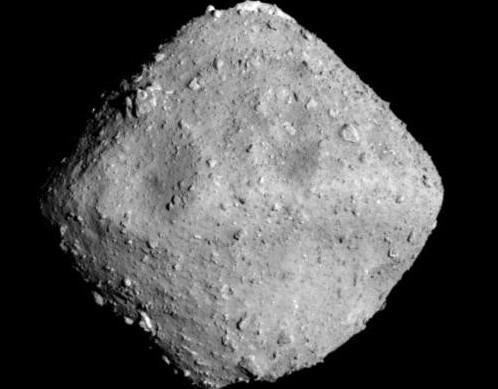Japanese space agency to land Hayabusa-2 spacecraft on asteroid and carry samples back to Earth
The mission will see scientists detonate an explosive on the rock known as Ryugu

Your support helps us to tell the story
From reproductive rights to climate change to Big Tech, The Independent is on the ground when the story is developing. Whether it's investigating the financials of Elon Musk's pro-Trump PAC or producing our latest documentary, 'The A Word', which shines a light on the American women fighting for reproductive rights, we know how important it is to parse out the facts from the messaging.
At such a critical moment in US history, we need reporters on the ground. Your donation allows us to keep sending journalists to speak to both sides of the story.
The Independent is trusted by Americans across the entire political spectrum. And unlike many other quality news outlets, we choose not to lock Americans out of our reporting and analysis with paywalls. We believe quality journalism should be available to everyone, paid for by those who can afford it.
Your support makes all the difference.The Japanese space agency will land two robots on an asteroid next month – the latest step in historic plans to explore its surface and bring samples back to Earth.
The mission to the 1km-wide space rock, known as Ryugu, could provide clues not only to the asteroid's formation but to the formation of our solar system.
The Japanese space agency have now selected dates for the deployment of smaller crafts from Hayabusa-2 .
The Hayabusa-2 spacecraft arrived at the asteroid, some 186 million miles from Earth, in June. Since then, engineers have been working on plans to explore Ryugu's surface.
The first will fall on 21 September, when small robots will hop out of Hayabusa-2 and onto the asteroid's surface, exploring it and sending images back home.
Then on 3 October the spacecraft will drop a package called Mascot, built by scientists in Germany and France, that will further explore the surface.
Two later missions will see a lander drop onto the asteroid and scientists blast a hole in the surface in order to explore what lies beneath.
Hayabusa-2 will then make its way onto the surface to pick up samples. Then, in perhaps the most astounding part of the mission, the samples will be carried back to Earth allowing scientists to study objects that have travelled the solar system.
The spacecraft will depart the asteroid in December 2019 and is due to arrive back on Earth in the following year.
Join our commenting forum
Join thought-provoking conversations, follow other Independent readers and see their replies
Comments